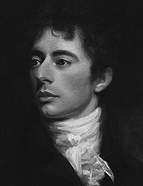

Using the appropriate language for composing the work in English was crucial for Southey, as the deeds narrated from the distant past could not be conflated with the refinement of the present. Mediaeval Portuguese rusticity needed to be reclaimed on its own terms, and restoring its distinctiveness was deemed worthwhile. Southey recognised that the literate English-speaking public would likely be interested in the history of Portugal, particularly its foundation myths, due to their similarities with the history of Great Britain, whose origins were also enveloped in popular myths and fantasies.
In his initial project, Southey expressed his intention to develop a universal pedagogy from the history of Portugal, aiming to illustrate both the positive and negative potential of the nation for civilisational progress. The scholar's expectation was that, by writing the História de Portugal , it would be possible to access a universal pedagogy on the development of nations. Southey was thus engaged in the dual challenge of restoring the significance of Portugal's past to Europe, addressing the prejudices of 18th-century literati against its mediaeval roots, while also critically examining the historical actions that could lead to decadence. In this context, the past was both the source of great deeds to be celebrated as monuments of European Gothic cultural heritage and the origin of the missteps that led to the nation's decline in the 16th century, exemplified by the "miserable expedition of [King] Sebastião" to Africa (R. Southey, Journals of a Residence in Portugal 1800-1801... , 1960 [1801], p. 146).
After returning from his stay in Portugal, Southey worked as a private secretary to the Minister for Finance in Ireland for a few months. In September 1803, he moved to Keswick in the Lake District to share a house with Coleridge and Sara, who were already living there. Southey lived in Keswick until the end of his life, where he cared for his large family—Edith gave birth to eight children. The scholar lived twelve miles away from William Wordsworth, his friend and collaborator. Southey also maintained a good relationship with Walter Scott, who nominated him for the position of poet laureate, a role he took on in November 1813.
This work is financed by national funds through FCT - Foundation for Science and Technology, I.P, in the scope of the projects UIDB/04311/2020 and UIDP/04311/2020.
